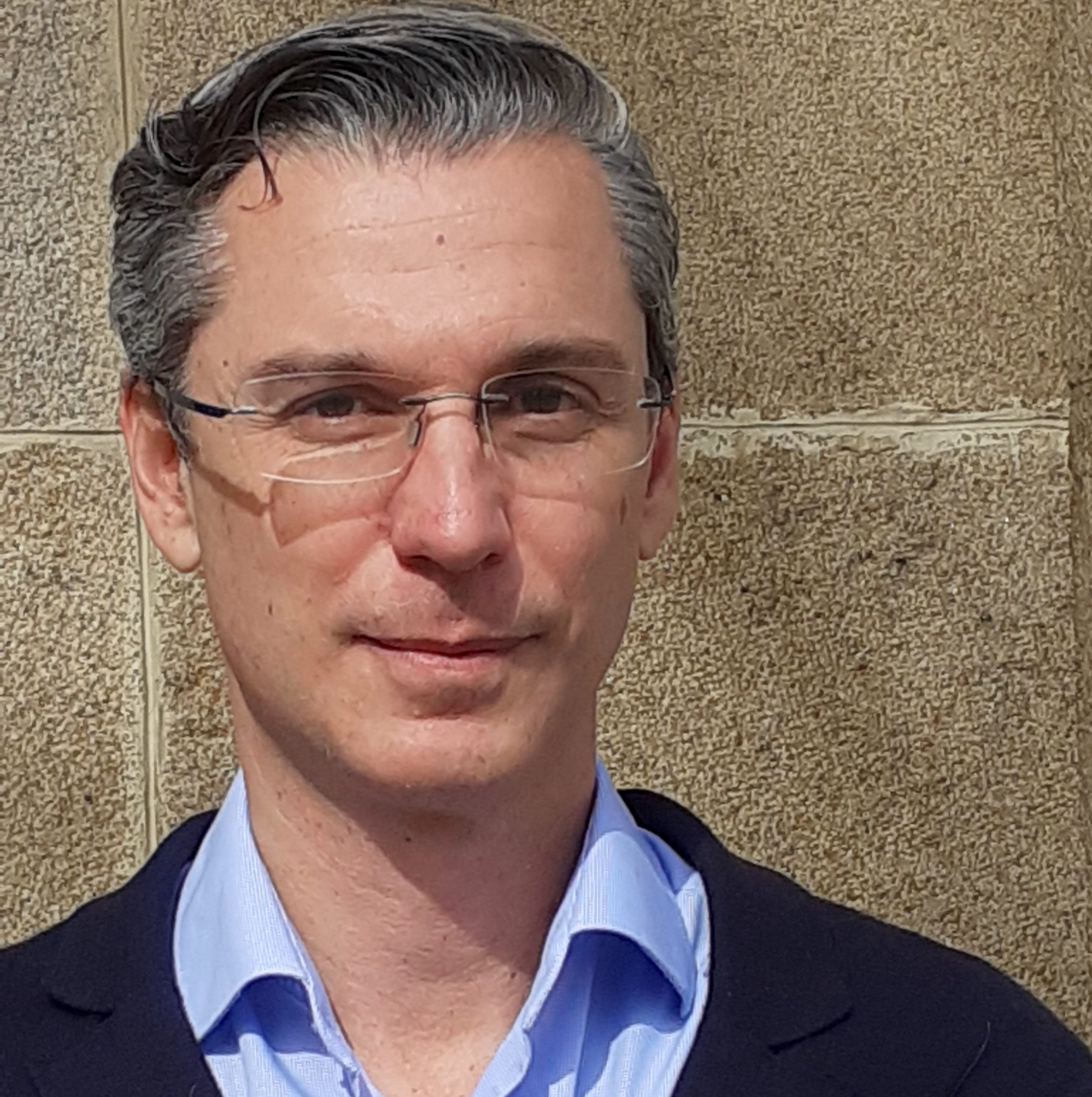FHB Interview with PABLO SÁNCHEZ GARRIDO
BEHIND THE REMAINS OF CALDERÓN DE LA BARCA
His life was as bizarre as his memory is centuries later. Pedro Calderón de la Barca, an illustrious writer of the seventeenth century, a glory of the Spanish literature of the Golden Age, is suddenly making headlines in newspapers in the 21st century. The “person in charge” is Pablo Sánchez Garrido, professor at the San Pablo CEU University and director of the search for Calderón’s remains, which has been activated for a few weeks. In this interview with FHB he tells us the last hour of this exciting project.
ISABEL AIZPÚN
Madrid, marzo 2021
Calderón de la Barca, as current news, is a topic that draws a lot of attention. How do you embark on this adventure?
I am a professor of History of Ideas; I am not directly related to literature, except from its influence on thought, but they told me about a book on the History of Congregation of San Pedro that has its headquarters in the Church of Dolores, with which I have a lot of personal relationship. Specifically from a book in which there was talk of a priest who confessed, on his deathbed, that Calderón had not been buried as believed, but that the casket with his remains had been kept between the walls of the church and that, therefore, it remained there.
And you clearly saw that it could be a relevant project that should not be overlooked.
I thought it was worth getting involved and we started it from the University. I think that it is an opportunity to recover Calderón, not only physically by looking for those remains, but also socially, literarily and intellectually. It is a figure that symbolizes the union of all because he dazzled everyone, not just the aristocrats or intellectuals of that time. He represents a feeling of union of the different social classes, in addition to what his contribution meant for the history of literature. He was an advanced personality in his time, for example, with the creation of dystopias such as Life is a Dream that today would remind us of movies like Matrix. It is, without a doubt, an occasion to enhance his figure.
At this moment, are you awaiting the approval of the Congregation of San Pedro, to which Calderón belonged, to drill a couple of locations within the walls of the Church of the Dolores. Has it been difficult to define those two points?
We have worked with the georadar team that located the remains of Cervantes. The work they are going well, but they have had to be delayed first due to the Covid 19 pandemic and later by the snow storm, Filomena. I hope that, shortly, we will have the final authorization.
And, in addition, with all the efforts underway, another very interesting finding has emerged in this puzzle of following the traces of the writer…
We have been fortunate that the Countess of Asalto, a descendant of Calderón, when reading about this project, she immediately contacted us to offer us the key that opens the chest where the remains rest and that she and her family have guarded for almost two centuries. There was always a Count of Assault in the six exhumations that have taken place throughout the centuries, attending as the official representative of the descendants. The chest and the key had been stolen in the Civil War and had been claimed by the family, upon completion of the war, to the Service of Defense of the Historical Patrimony.
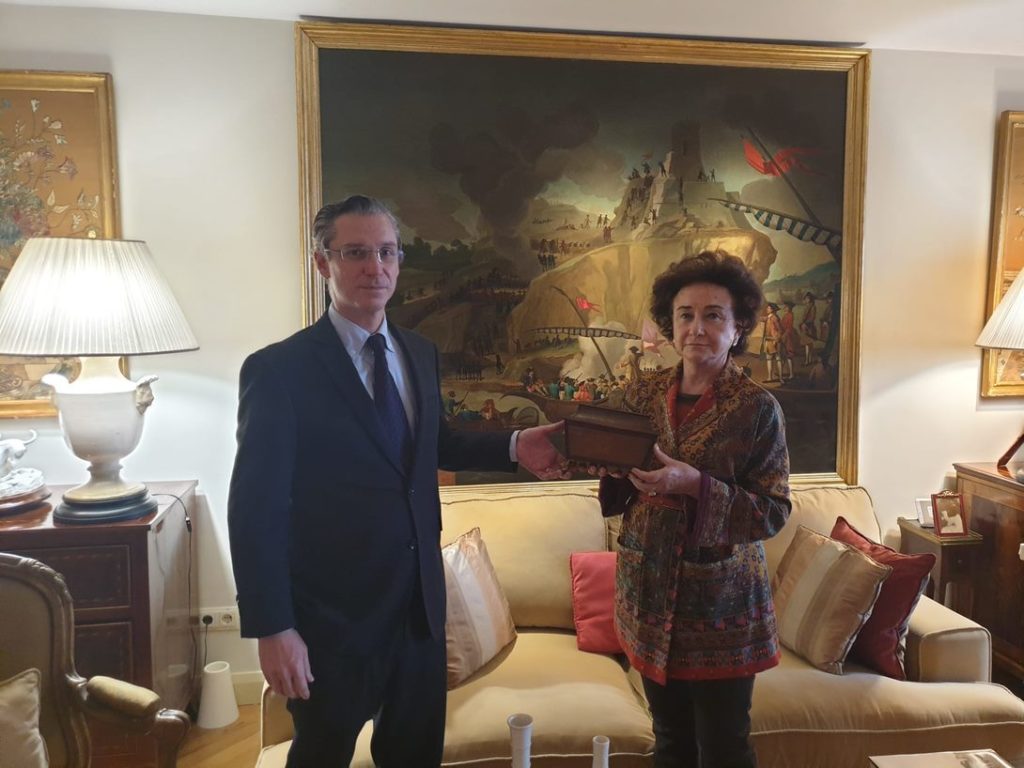
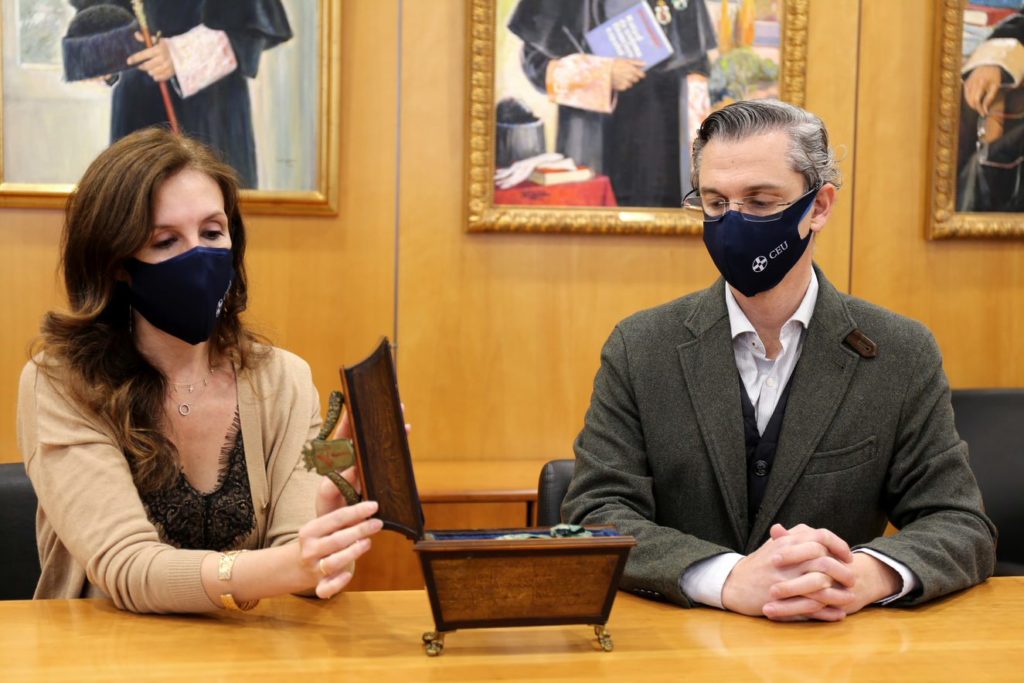
The CEU San Pablo researchers who are looking for the remains of Calderón 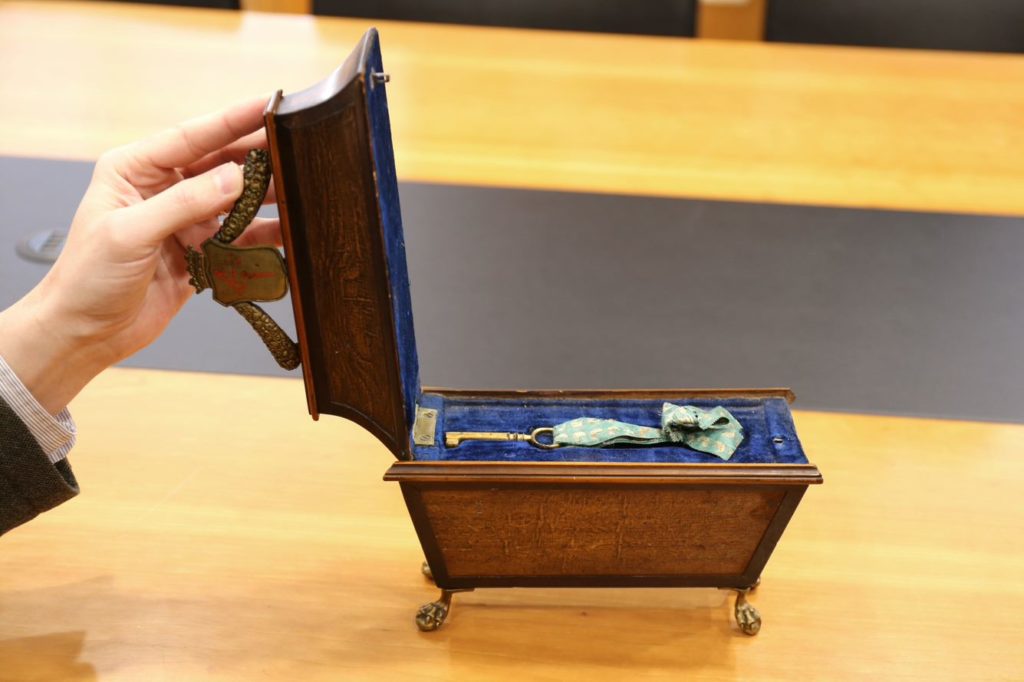
The key that opens the funeral urn of Calderón de la Barca
With a magic key, georadars, monks who confess what they know before dying… This story begins to look like a detective story or Indiana Jones movie. You can not escape from this nickname that they have already given you, the Spanish Indiana Jones… although the setting is much more traditional than Hollywood and we still do not know the ending.
The scene of what this film would be, of what happened centuries ago, is that of the streets and churches in Madrid since Calderón’s remains were interred six times.
The first exhumation occurs because they demolished the historic church of San Salvador in 1842; so he was led to the Sacramental de San Nicolás; then to San Francisco el Grande, to go to the projected Pantheon of Illustrious Men, but, as there is no budget enough to do so, he returns to the Sacramental de San Nicolás. The Congregation of San Pedro claims his remains, since Calderón de la Barca was a member of that congregation, which they are taken to the Torrecilla del Leal hospital and from there, in 1902, to the new headquarters of the Church of the Dolores. Transfers that become solemn, multitudinous events, because they attract thousands of people to the streets to accompany the float with their little one Mahogany, glass and bronze coffin. Each transfer was a solemn procession with a parade of horse carriages and halberdiers and in which writers, priests… personalities who accompanied him throughout Madrid, through streets from whose balconies they threw flower petals. He was accompanied as the respected and revered figure that he was.
But more recently, there is an important date, 1936. Militiamen enter and burn the church. It was razed to the ground, the priest shot, and the chest disappeared, but the walls were kept standing. In 1964, Vicente Mayor, the senior chaplain, wrote the history of the 400 years of the Congregation and in it collects the testimony of a priest of the Congregation in his deathbed which says he witnessed the 1902 burial and claims the remains were placed between the walls of the church. But he died without saying where.
And you understand that, with that information, it is a challenge to try to find the remains of an eminence like Calderón de la Barca. Surely, among all these efforts, it has also been the opportunity to know a little more about his figure and his life, which is something bizarre because it seems that he lived intensely before professing …
Calderón was quarrelsome, sometimes a womanizer, he had a son, he was involved in riots and even in one that ended with a homicide, he was excommunicated, went through the jail of the University (Universities at that time had jail), he became a military man, participated in the Tercios de Flandes and in the war in Catalonia, he was Knight of the Order of Santiago, and, finally, he professed as a priest, an exemplary priest who was appointed Chaplain of honor of King Felipe IV.
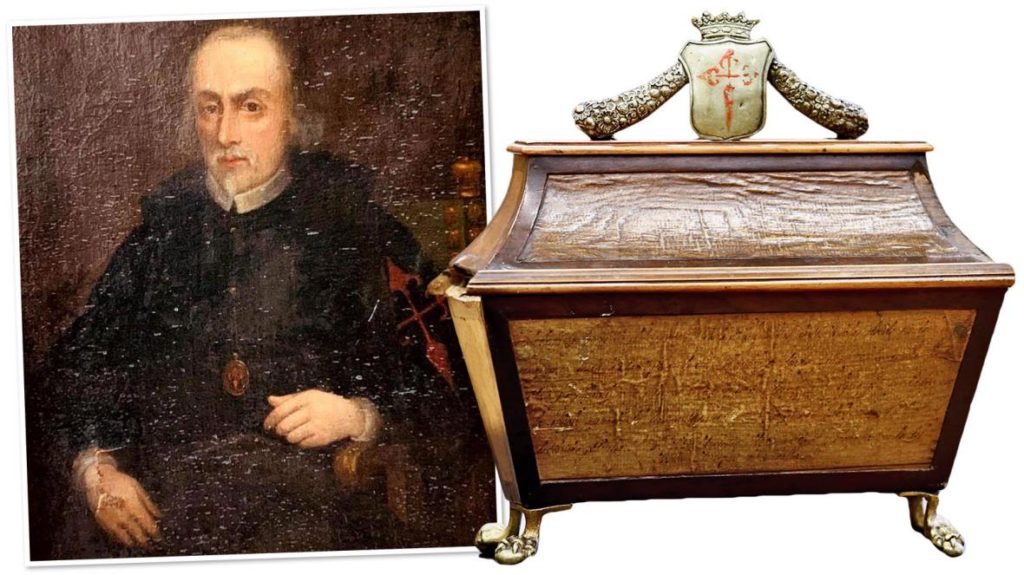
And during all that intense life, in parallel, he became a great writer of the Century of Gold. Is it true that it has been called the Spanish Shakespeare at some point?
He was much admired in Germany and also by British writers, especially by the romantics. It can be said that he coincided with Shakespeare in the themes dealt with in his works, those referring to human passions. Those themes made him win that admiration of the Romantics. Lord Byron always expressed his admiration for the writer and referred to him as a romantic character and Mary Shelley and Percy B. Shelley, her husband, translated his works and reflected important influences in their own works. It also influences S. T. Coleridge, among many other British romantics. His first known comedy, Love, Honor and Power tells the fabled story of Edward III of England and was released with success in the Palace on the occasion of the visit of Charles, Prince of Wales, in 1623.
So, from FHB, we wish you the best of luck to discover the latest vicissitudes of the history of Calderón de la Barca.

